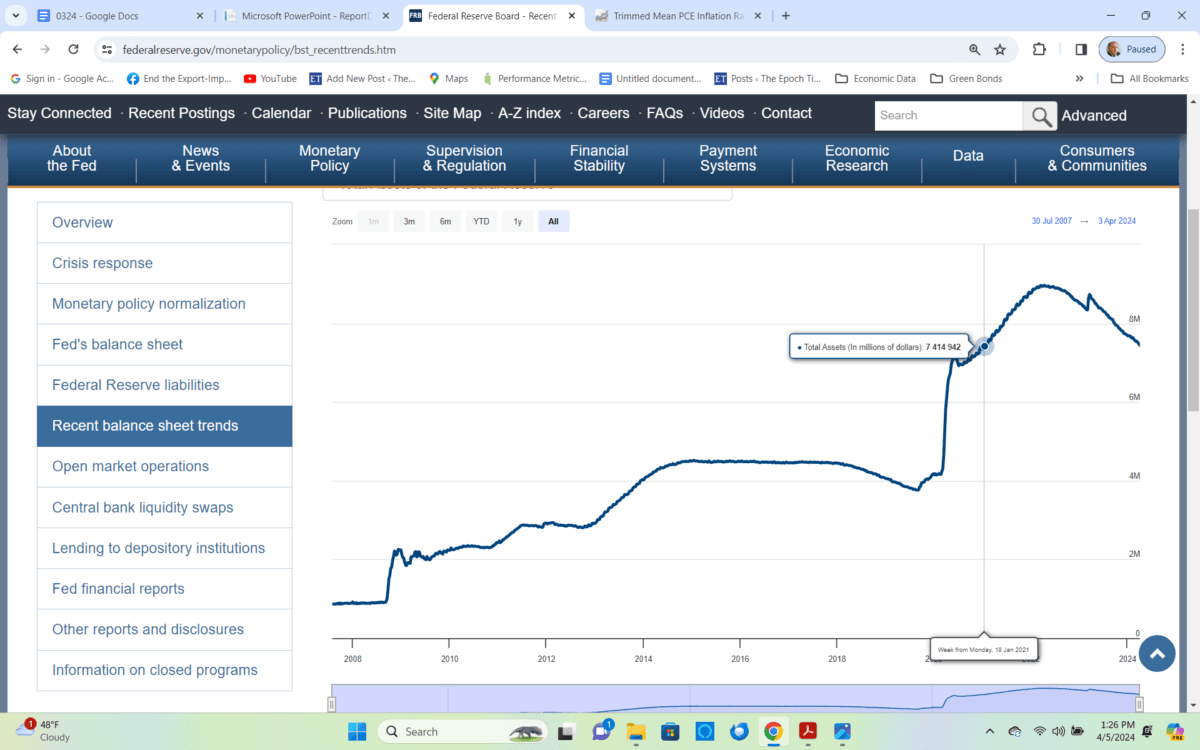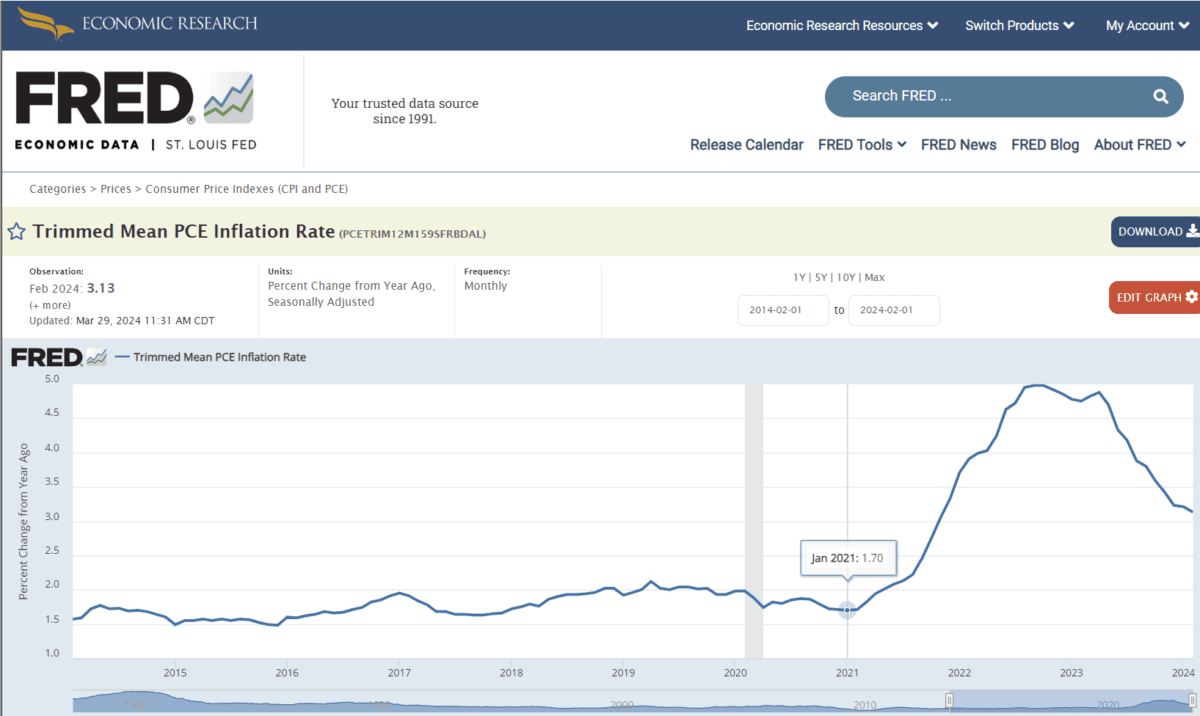Commentary
March jobs printed at 303,000 new jobs, according to the Establishment Survey released this morning by the Bureau of Labor Statistics (BLS). The number is an estimate of job creation data from a survey of businesses. The figure well exceeded the 212,000 consensus estimate. January and February jobs creation revisions were up by 22,000 jobs, net.
The BLS’s Household Survey, which calculates the number of people taking jobs and is viewed as eliminating workers taking more than one job, showed 173,000 more people working in March than February.
Some 469,000 people joined the U.S. workforce, according to the Establishment Survey, that The Wall Street Journal speculates are largely migrants newly arrived in the United States. However, U.S. Acting Labor Secretary Julie Su attributed the figures to “teenagers, both native born and immigrant” joining the workforce.
Let’s look at our exclusive schedule of March Jobs by Average Weekly Wages.

Higher-paying jobs creation was virtually moribund, save for construction, which added 23,000 jobs. Both durable and non-durable goods manufacturing jobs declined. Lower-wage jobs, such as in leisure and hospitality, retail, and other services, and jobs that tend to have government support, like education and health services and health care and social services, generated the majority of the new jobs creation in the Establishment Survey. Moreover, there was a staggeringly high 71,000 new jobs created in government. (We do not include government jobs in our chart.)
Our quarterly detail of real and nominal weekly wages by industry is here:

Economy Generally (Opinion)
At the moment, the United States is at the top of the Group of 7 in terms of its economic performance. But it is arguably the “tallest pygmy,” and much of the good performance is fueled by enormous federal spending and debt, whereby we are on track to spend a trillion dollars every 100 days.
We have said for quite some time that the Federal Reserve balance sheet is too large, much larger than it should be, given how far we are from the pandemic (see graph).

As of April 1, the Fed’s balance sheet was still at $7.4 trillion, well exceeding the $7.1 trillion it was in June 2020, the height of the pandemic. It is now roughly the same $7.4 trillion that it was in January 2021. It has not been reduced at all since President Joe Biden took office.
So, too, has the money supply, M2, continued to be inflated since the pandemic. As of February, M2 stood at $20.783 trillion versus $19.3 trillion in January 2021. It was just $15.3 trillion at the start of the pandemic.
We believe, as we have said for months now, that monetary policy and the Fed’s effort to assure a “soft landing” ahead of the 2024 elections, instead of going through a lengthy, mild recession—or better, a sharp, short recession—continues to be far too accommodating, and has been a longer-term mistake. We see it in the continuing trimmed mean inflation rate, which has ballooned throughout President Biden’s term. Continuing inflation bears out the obvious effect of the excess money supply as seen in this chart:

The Biden administration’s fiscal policy puts the lie to his claims that he is “building the economy from the middle out” versus the “top down.” His spending—and particularly the deficit spending—that he has continued long after the pandemic while real wages stay relatively flat says the opposite. (For those interested, they should look at the schedules of “Household Debt and Credit,” prepared quarterly by the Federal Reserve Bank of New York, for some troubling debt and delinquency figures, particularly among “Generation Z,” those young people aged 18–29 who are the principal drivers of family formation which drives so much of GDP.)
The administration’s fiscal policy is adding an additional trillion dollars to the national debt every 100 days. All that cash sloshing around—from fiscal and monetary policy—has, we think, artificially boosted asset prices, including home prices, above where they would otherwise be. We believe it sets up a reckoning in the future: either continued inflation (as the spending continues and deficits increase) or a sharp and perhaps lengthy recession, the kind of lengthy economic malaise we saw after the financial crisis of 2008–09.
Failing to arrest this extraordinarily dovish fiscal and monetary policy—and soon—will, we believe, result in a Hobson’s Choice of policy making (whereby multiple options available is an illusion), wherein future prosperity is at substantial risk. But we are not optimistic.
Looming ‘Gray Swans’
There are at least three looming “gray swans” facing the economy. Gray swans, as opposed to “black swans,” are events that can be foreseen, but are unlikely. Black swans are totally unpredictable.
A gray swan, like a hurricane in hurricane season, is a potential threat that can be compared to bad national policy choices. These looming gray swans are foreseeable and include:
• De-dollarization—The decision to weaponize the dollar against Russia has led to several nations opting for direct settlements in their own currencies, impacting the global financial landscape.
• Oil shock—Recent events such as the Gaza War and Israel’s strike on Iran’s consulate in Syria could lead to a wider conflict and potential oil shock. However, the Strategic Petroleum Reserve is at its lowest level in over 40 years, posing a challenge.
• Chip shortages—Taiwan’s recent earthquake may have already caused disruptions in the supply chain, affecting various industries worldwide.
The economy has shown signs of expansion, with the Institute for Supply Management’s Manufacturer’s Purchasing Managers Index (PMI) indicating growth in the industrial sector. The service economy also saw expansion, albeit at a slower rate. Additionally, data on job openings, housing permits, personal income, and inflation provide a broader perspective on economic trends.
The RCP/TIPP Economic Optimism Index for March reflects fluctuations in investor sentiment, highlighting the need for careful consideration in financial decision-making.
Please note that the views expressed are opinions as of April 5, 2024, and should not be considered as investment advice. Consult with appropriate advisors before making any financial decisions. Please provide an alternative version.
Source link







